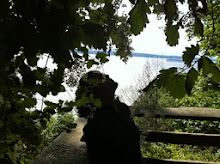 |
| The Peacock we know (and don't know). |
 |
| A peacock tries to impress a peahen. |
 |
| The fabulous colours, the result of structural colouration. |
 |
| Peacock feeding on seeds laid out for birds in a residential locality in India. |
There is much about the peacock that we think we know. But I suspect there is much we don’t.
I could tell you that the iridescence plumage of the peacock isn’t due to colour pigments but is a result of structural colouration– that means the fibres in the tail feathers scatter light, in accordance with a complex optical interference phenomenon (Bragg reflections). And as optical interference depends upon the angle of light, the colours seem to shimmer as we view the peacock from different angles.
But I would rather talk about how the bird, which is a forest dweller, now comes looking for food to houses that are being built on what once was forests. Instead of roosting on trees, the peacocks now settle for the night on cell phone towers that have taken the place of trees.
Peacocks scavenging for food in open garbage dumps was one of the reasons why I started observing birds as a means to understand the impact of human consumption on other living beings. Before that I spent a large part of the day looking at garbage dumps– the other side of human consumption. But garbage dumps aren’t attractive enough to make people understand that their every action has a consequence. Or that there is no such thing as ‘free choice’.

















1 comment:
What do Peacocks eat?
Post a Comment